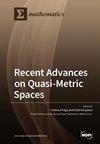增强路边停车位占用率预测模型:将自适应 GCN 和 GRU 与家庭类别和 POI 因素相结合
IF 2.2
3区 数学
Q1 MATHEMATICS
引用次数: 0
摘要
准确预测停车位占用率对导航和自动交通系统至关重要。本研究介绍了一种深度学习模式 AGCRU,它将自适应图卷积网络(GCN)与门控递归单元(GRU)整合在一起,用于预测路边停车位占用率。通过利用墨尔本的真实数据,该模型利用路边停车传感器捕捉停车行为的时间和空间动态。AGCRU 模型在加入兴趣点(POIs)和住房数据后得到增强,从而提高了基于空间关系和停车习惯的预测准确性。值得注意的是,该模型在 15 分钟、30 分钟和 60 分钟时的平均绝对误差(MAE)分别为 0.0156、0.0330 和 0.0558;在这些时间间隔内的均方根误差(RMSE)值分别为 0.0244、0.0665 和 0.1003。这些区间的平均绝对百分比误差 (MAPE) 分别为 1.5561%、3.3071% 和 5.5810%。这些指标大大低于传统模型和竞争模型的指标,表明 AGCRU 模型在城市环境中具有很高的效率和准确性。这表明该模型是加强城市停车管理和规划战略的工具。本文章由计算机程序翻译,如有差异,请以英文原文为准。
Enhancing Predictive Models for On-Street Parking Occupancy: Integrating Adaptive GCN and GRU with Household Categories and POI Factors
Accurate predictions of parking occupancy are vital for navigation and autonomous transport systems. This research introduces a deep learning mode, AGCRU, which integrates Adaptive Graph Convolutional Networks (GCNs) with Gated Recurrent Units (GRUs) for predicting on-street parking occupancy. By leveraging real-world data from Melbourne, the proposed model utilizes on-street parking sensors to capture both temporal and spatial dynamics of parking behaviors. The AGCRU model is enhanced with the inclusion of Points of Interest (POIs) and housing data to refine its predictive accuracy based on spatial relationships and parking habits. Notably, the model demonstrates a mean absolute error (MAE) of 0.0156 at 15 min, 0.0330 at 30 min, and 0.0558 at 60 min; root mean square error (RMSE) values are 0.0244, 0.0665, and 0.1003 for these intervals, respectively. The mean absolute percentage error (MAPE) for these intervals is 1.5561%, 3.3071%, and 5.5810%. These metrics, considerably lower than those from traditional and competing models, indicate the high efficiency and accuracy of the AGCRU model in an urban setting. This demonstrates the model as a tool for enhancing urban parking management and planning strategies.
求助全文
通过发布文献求助,成功后即可免费获取论文全文。
去求助
来源期刊

Mathematics
Mathematics-General Mathematics
CiteScore
4.00
自引率
16.70%
发文量
4032
审稿时长
21.9 days
期刊介绍:
Mathematics (ISSN 2227-7390) is an international, open access journal which provides an advanced forum for studies related to mathematical sciences. It devotes exclusively to the publication of high-quality reviews, regular research papers and short communications in all areas of pure and applied mathematics. Mathematics also publishes timely and thorough survey articles on current trends, new theoretical techniques, novel ideas and new mathematical tools in different branches of mathematics.
 求助内容:
求助内容: 应助结果提醒方式:
应助结果提醒方式:


